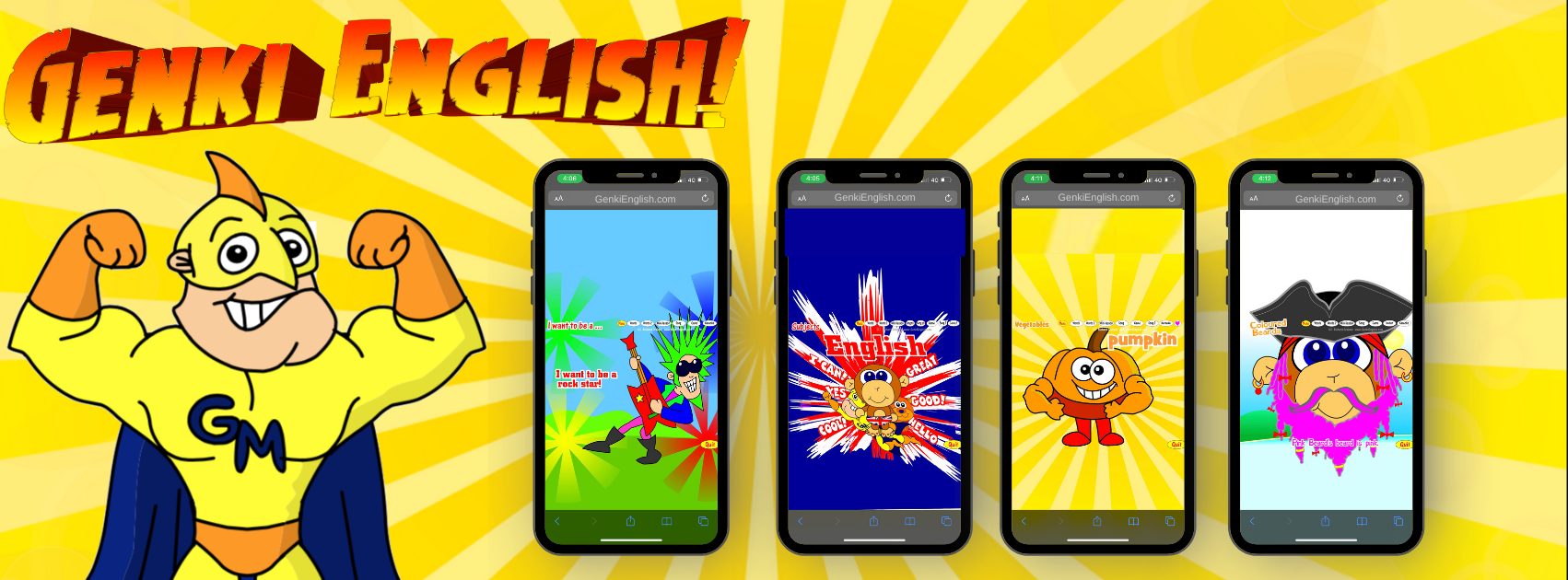 One of the biggest surprises in the workshop last week was that most of the teachers didn’t know how diamonds were made.
One of the biggest surprises in the workshop last week was that most of the teachers didn’t know how diamonds were made.
We were talking about shy students and I was showing them how we train the whole class to work as a team, working together to support every child, with super motivation.
(Hence the new “You’re on my team.” quote in the posters last week)
But one of the teachers said “I don’t like putting pressure on the students. What if they cry?”
And I think that is the problem. 🙂
How did they get there?
Diamonds didn’t get formed by sitting there comfortably going unchallenged.
Diamonds started out as boring chunks of basically coal.
But then they got crushed, squashed with millions of tons of rock and pressure.
It’s that pressure that forms the brilliant structure of the diamond.
It’s just the same with humans too.
Sometimes we cry, but crying is never a bad thing.
But just leave a student sitting there, skipping them over because “oh they’re shy” …..
Then they will feel worthless.
Because the teacher thinks they can’t do it either.
That’s not what we do here.
Our job is to boost the kids up.
To gently, safely, apply the pressure to make them rise.
Not millions of tons, but always enough to move them up a level when we know they can.
And they always can. 🙂
Safe & Sound
The key, of course, is to offer them the cradle.
The super supportive atmosphere that allows them to take risks and not care if they fail.
To know that *all* their classmates are on their side, on their team.
That *everyone* is rooting for them to win.
In the presentation lessons (e.g. Superhero or Treasure Adventure) we train the kids to always be listening.
If you’re not talking, you’re listening.
Attentively and supportively.
All the time.
To everyone.
So the “shy” child tries.
The other kids listen.
It’s quiet.
The teacher, down on the child’s eye level, but still making eye contact with everyone else, asks them to try again.
And they do, still softly.
You ask the class if they think the student can do it.
The other students say “of course! You’re on our team!”
The student tries one more time.
Slowly, but surely, miraculously they do it, and smile.
And then everyone smiles.
Of course it takes time to get here, and you need all the discipline in place beforehand.
But this is how you make diamonds.
Properly placed pressure and never just skipping over.
Let’s not make lumps of coal.
Let’s help make our children become what they really are, a sky full of shining, brilliant diamonds.
Be genki,
Richard




Hi Richard!
And thank you for touching upon this very important theme. I think every teacher feels upset when a child refuses to respond. And every teacher is very happy when the child finally takes a risk and makes progress.
It can happen if a teacher makes a diamond of him/herself.
I will always remember how you did it in my school!
I totally agree! Beautiful post 🙂
This is a very important message. Thank you for the wonderful analogy.
I would still love to see Richard demonstrate this. I have heard it is eye-opening.
I try in my own ways. I still allow students to remain quiet in class, but I do require that they participate in some way. I have talked to students about how they want to show understanding. They have drawn pictures or come to me for a one-on-one conversation etc.
I also think that labels can be very damaging. “Shy”, “ADHD”, “learning disabled” etc can easily be an excuse for teachers to say it can’t be done. Genki English uses a lot of visual and aural input including humor and songs. Lots of ways to reach students who have difficulties gaining information from lectures or sentences in a book. I often have others students gasp when a student who ‘shouldn’t’ know the answer, answers with ease.
Creating a safe environment that allows students to learn from their own or classmates’ mistakes, and trying to present the material in a way that is clear and easy to understand is key in the classroom.
Teaching to the eyes and believing in the students is the best gift teachers can give!
It is very interesting trying to figure out what makes a kid tick. I have a number of “shy” students. One girl seems terrified to come to class and looks terrified the whole time to participate, yet when she will participate and even confidently speak up when a sticker is involved and she knows the answer. Another girl seems worried she will let her team down. She burst into tears when we did the lines quiz one of the first couple times and she was the girl who was beat for the other team to all be sitting down (even though she still had two teammates behind her who had also not been seated). In this case, I made sure to get the other kids to encourage her which they did, and when we tried again she was able to get seated before being put in that position of being on the spot to try to prevent the other team from winning.
I’ve noticed that when introducing the line quiz, some kids just always get beat at first because they just don’t understand the concept of quickly answering. It is a real joy to see these kids succeed in a couple weeks confidently and quickly shouting out the answer to a question.
The most problematic kids are those that seem to just not want to participate or pay attention and when I try to get them to participate in a speaking exercise they remain very quiet and disengaged (often because they seem to not know the material).
I’m experiencing something hard but not entirely new. All my classes, I have taken over from another teacher that was at the school for two years (much like my replacement had to do at the school I just left). My first job, I also had to do this and it was terrible as I had no experience or confidence teaching. This time around, I’ve been getting a little down, but I’m trying to keep my head up with the knowledge that I had really good classes at my last job (my second teaching job). Of course, those kids were all mine from the very start at my last job and right now I am the new guy on the block with my classes…teaching them new games, methods of rewards, what I expect, etc.
Hi Gumby! Hi Martin!
Thank you for your frank and interesting comments.
And what do you think about prompting? I mean when stronger students help weaker students answer wispering prompts in the ear.
Hi again Richard!
What about adding “You’re on our team!” poster to the previous once?
@Julia: It’s added! http://genkienglish.net/teaching/something-to-brighten-up-your-walls/
@Gumby: We’re going to have to organise a workshop over there for you! 🙂
@Richard, Yes, I think I am way overdo for a workshop!!!
@Julia, I think prompting can be good for all involved, as long as it is done with the intention helping the weaker student to become more indepedent in the long run. In my JH, the students have ‘English pairs’ or ‘math pairs’. During certain exercises the teacher would say “Make pairs” and they would work with partners that the teachers set up.
I think there has to be a lot of thought going into pairs. for example it can be better to pair the top students together. Working buddies can work in different ways to make all parties more confident.
As a teacher, it also helps to ask YES/NO, either/or, or 5W1H questions depending upon the level of the students.
Students really do want to understand and learn. Some very sage advice given to me is that when students start to tune out, use the language to focus on the students interests and go SLOWER. I don’t mean slower as in more drills or lengthy explanations. I mean by making sure the meaning is clear to the students. (Not so much of a problem if you use GE! 🙂
and then personalizing the lesson so that the topic is something students can relate to. You would be amazed at how this can make a big, big difference.
@Gumby, thank you very much for your kind answer.
I came to the conclusion that the problem is that we teachers often think that children can get used to answering with other children’s prompts. But looking at newborn babies who can’t do anything without help, and then at 2-year-olds, who can do nearly everything that an adult can, I think that we should be more patient.:-)
Good luck!
Very interesting article – thanks again, Richard! And thanks to all the teachers who have added comments – very useful!
In order to get the kind of confident students I want, I need to provide a ‘safe’ environment. This is easier now the students know me better – getting a good rapport with each individual student is important. Doing fun games makes them less self-conscious and I think music has a calming and uplifting effect. When they applaud each other and help each other during team work, that improves relationships.
It’s always easier to speak in a small group – pair-work and group-work is always easier for shy students, but even if it’s a big class I think the technique you described of being on their level and getting everyone else to encourage them would work very well. Sometimes the teacher’s encouragement is not enough, they need the support of their classmates, too. The less confident students are usually those who find it more difficult, so I think I need to make sure the questions are ones they can answer without too much difficulty – at least most of the time.
The students know that my knowledge of their native language isn’t perfect either, so they don’t need to worry about making mistakes! 🙂
Thanks again to everyone for the ideas! Recently the students were sitting down colouring in bunny rabbit pictures while I went around asking them questions individually (body parts, colours…). I used a quiet, gentle approach for the students who have difficulty talking, crouching down next to them, smiling, giving lots of praise for any response. I’ve never seen them look so happy talking English! I think when they’re really enjoying an activity they forget themselves more easily.
I know self-conscious students don’t like being stared at so I was thinking whether there was an activity where they all focus on the board or close their eyes and imagine something, or even play peek-a-boo covering their faces with their hands. I haven’t come up with anything yet… I also wanted to ask whether anyone had tried using quiet background relaxation music to reduce tension and anxiety. In any case I’m thinking of putting Genki music on whenever they’re doing a sitting-down activity.
I always try to ask the kids questions while they are doing an activity like drawing and coloring (for my own feeling of actually having some English going on). I also hope that it leaves the kids a little more relaxed to take their time and answer things confidently and not be worried about other students hearing them. On the other hand, I have a hard time getting them to actually answer me as they are so focused on their work.
Thanks Martin. Yes, I do drawing activities related to the theme I’m doing so that I can talk to them individually on the topic. (I just like to have them sit down for part of the time because they seem to get a bit over-excited sometimes – I don’t think they’re used to energetic learning games!) I’ve noticed the students are more at ease doing this kind of speaking activity, too. The very quiet ones certainly talk more. It’s good that your students are focused. Mine always stop for a moment to answer questions then carry on drawing, but I think they feel they’re always expected to be very attentive to the teacher (at least when she’s near to them!). They’re very good with the eye contact. A friend of mine has a game with her children to get their attention, she says ‘123, look at me’ then they say ‘1, 2, look at you’, it usually works!
Yeah, I need to get better with the class control things. I had my newest classes at my old school pretty controlled with 1,2,3 stuff, but taking over eight classes at this new school mid-stream is a little more daunting.
All the best with your new classes! I think eye-contact is more of a cultural thing, here in Turkey, so I can’t take the credit for that :). I’m off to an easy start with one class – good experience, though! I think the mingling and role-playing activities are what they’ve enjoyed most (but I’ll find out more from the survey!)
thanks so much for this very touching and so true encouragement for both teachers and students! beautiful thought!
Amazing , and awesome as usual Richard, wish you all the luck.
Many thanks to all the teacher who share their ideas and thoughts
Richard you are such a great person. I liked your way of thinking. I am at a loss at the moment since I started my school with a different company but I know how good Genki English and how nice method you have and from you I can learn a lot of things. I use Genki English in my lesson and kids love it of course! But I am not be able to use 100 % of Genki English at the moment and it is frustrated for me.
I will keep an eye on your website and I would like lean a lot of things from you. Thank you very much Richard.
Thank you Richard for allowing us to comment on this ever so important topic.
I have a student with autism. When his mom brought him she said that she just wanted him to socialize and that learning English was a plus. I had never dealt with a kid like that, in fact I’m pretty new at teaching children. I have more experience with adults.
I didn’t know what I was getting myself into, and then I thought of the other kids who are several years younger than he. To my surprise the kids welcomed him with open arms and every time he refused to participate they, on their own, started to encourage him. It wasn’t enough for him, but I was so proud of them.
I made the decision to treat him just as any other kid, with rewards and consequences. It was very tough at first. One of his biggest struggles is making mistakes. He hates them. He feels like a failure. So I talked to the rest of the class and asked them to help me by making mistakes every now and then, especially the top kids, to show Guillermo that everyone makes mistakes and that it was okay. So when the other kids made a mistake, I would say out loud “It’s okay. Making mistakes is not a problem. They are our friends, because they help us see where we need to work more.” And they would respond with a “Yes. It’s no problem. We all make mistakes.” After some time I asked Guillermo to participate and to my sweet surprise he said “It’s okay if I make a mistake, right?” My heart was so elated!! I felt so proud of him! That moment made me happiest as a teacher. And just like that he has been able to overcome other things he had struggled with. His grades at school have improved. He is more confident. He is very very friendly. He loves his classmates here. He even decided to celebrate his birthday with us instead of at his regular school 🙂
Hi, Richard
Thanks a lot for the letter. Sometimes I am in doubts about parents who take care of their kids in the way they can’t even breeth without parents’ permission. I thought that it’s me who understood nothing. Now I know what to say to the adults who put pressure on the teachers as well as on their own children. I realise that being strick and loving is better than love without boundaries. Thanks again.
It’s not a new look at working with shy children, but how you do it is absolutely unique! Thank you for your letter and good luck in everything.
Thanks Richard.Thats a really important point in classroom and for shy students.I alwaysvdo my best to make them attend and join my activities,song or games.I always try being Genki I think Immdoing well because one of our assistant student ask me how I am doing this with so much energy and enthusiasm.So I said it is because I am a Genki teacher🤗😉
This is wonderful ! It’s a really important thing that a teacher need to pay attention to in a classroom. With too many students we sometimes just want to get the lesson over with & would only call the proactive students. This letter was a great reminder.
Cool lessons and advice. Thank you Richard!
Speaking beautifully..as always 🙂 Amazing Richard, The Teacher :))) probably that’s the only thing that we should teach 🙂 when kids got faith in their own power, they got interest, which can be turned into love for the language easily…and All is possible after that :)))
Thank you so much Richard!